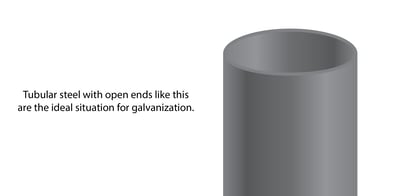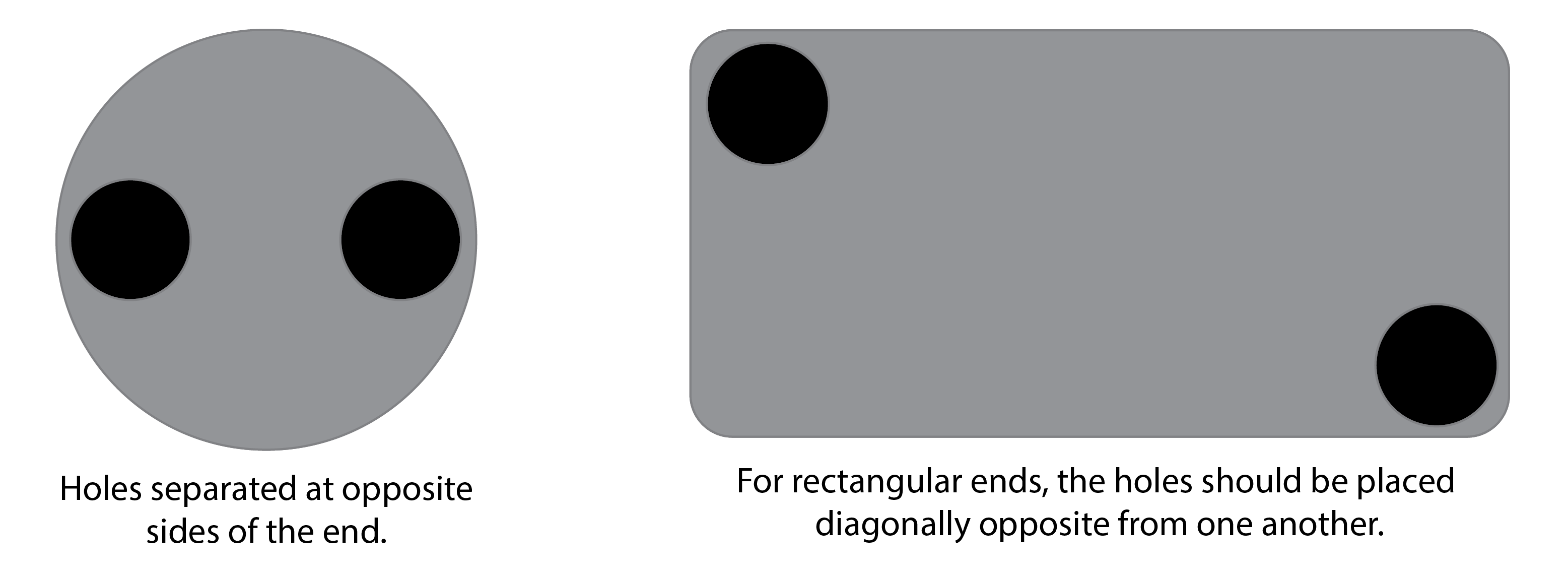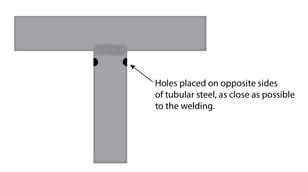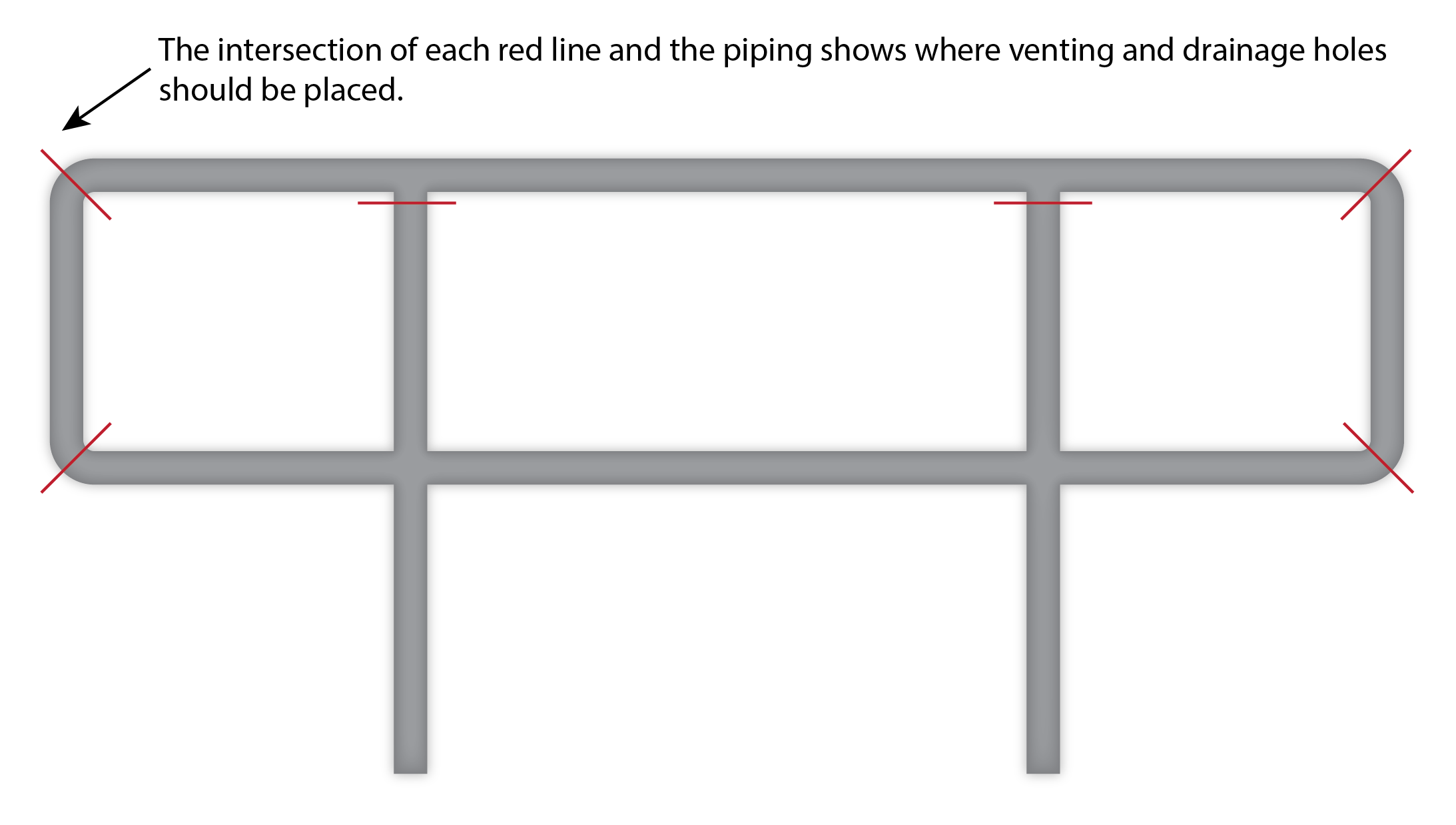In the last post about galvanized vent hole plugs, we covered the difference between aluminum and zinc vent hole plugs and the circumstances in which each one is best suited.
In this post, we’ll discuss proper placement of venting and drainage holes in a tubular steel object (frequently used in the fabrication of handrails or balustrades), since these are the components with which galvanized vent hole plugs are most commonly used.
Vent and drain holes are necessary for the proper galvanization of steel. They facilitate a thorough application of cleaning solution to prep the steel for galvanization, and a thorough application of molten zinc, which actually galvanizes the steel. In addition, vent and drain holes are necessary to safely galvanize the metal. Without them, moisture can be collected in crevices of the steel component during pre-galvanization treatments, which can become super-heated steam during galvanization. The rapid expansion of this steam can cause a rupture in the steel, or even an explosion.
If you are simply galvanizing a cylindrical, tubular piece of steel that is not sealed on either end, then venting and drainage holes are usually not needed as the openings will fulfills those roles.

In many cases, however, these openings aren’t permissible because of the design of the project, so venting and drainage hole will be required. Generally, two holes are required at both ends of the steel member. Combined, these holes should be at least 25% of the cross-sectional area of the end in which they are placed (3/8” at a minimum), and they should be place on opposite sides of each other diagonally.

As the volume of the steel member becomes larger, the more venting and drainage holes can be used. Many fabricators that The Steel Supply Company works with will include several holes in a steel member for the galvanization process. This is design dependent, however, and not always required.
For best results, steel components should be galvanized prior to fabrication, but in many circumstances this is not economically feasible. For example, take a look at the pre-fabricated steel component below.

In these cases, venting and drainage holes should be place as close to the weld as possible. The holes should be placed on opposite sides of the steel at 180 degrees apart from each other.

Also, frequently handrails will feature curved piping. Venting and drainage holes should be placed at each of the center of curvatures in these configurations.
While we've covered a few prominent cases of using venting and drainage holes for galvanization, there are numerous other situations in which it needs to be considered. Steel members such as I-beams with welded members inside the flange also need consideration.
If you have any questions about your how to best facilitate galvanization for your steel fabrication project, don't hesitate to reach out to one of The Steel Supply Company's representatives who can assist you.




